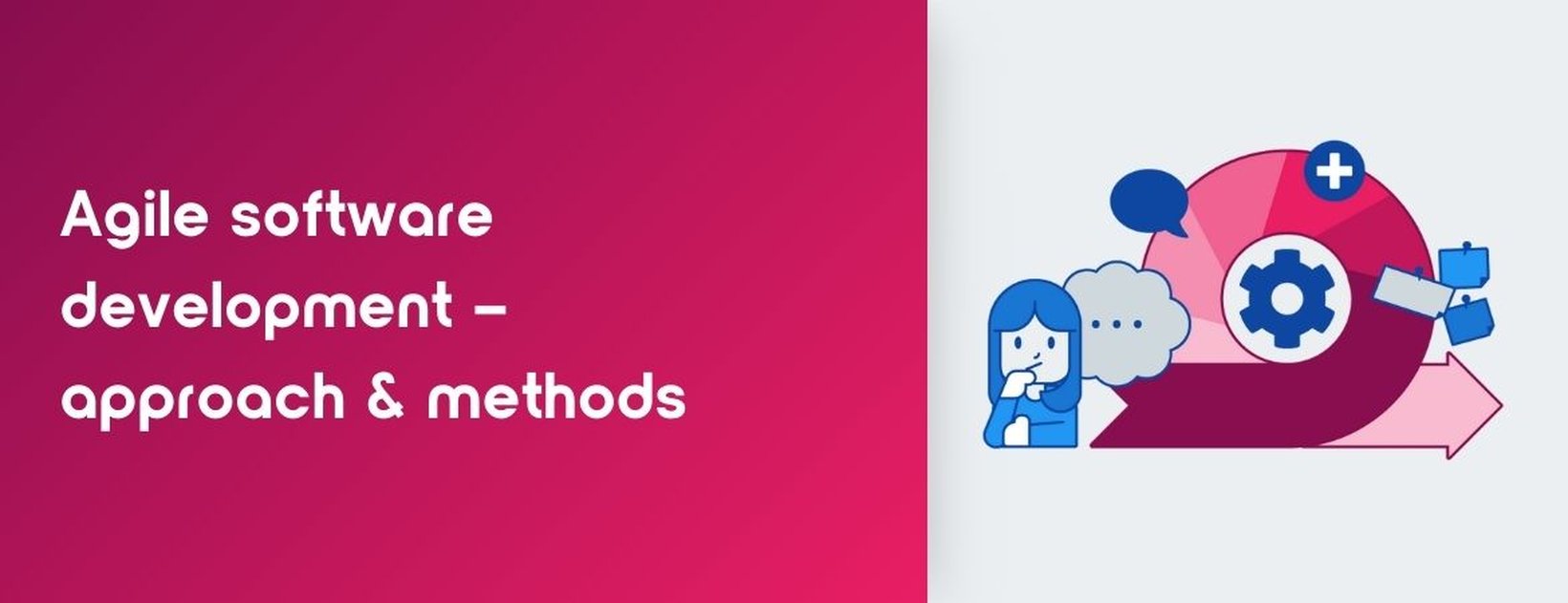Agile software development has fundamentally changed the way teams work today. Methods like Scrum or Kanban enable companies to respond flexibly to change, increase productivity, and deliver continuous value to customers. But how exactly do agile methods work? Which ones are best suited, and what does a typical project workflow look like? In this article, we’ll explain in a clear and practical way what agile software development really means.
What is Agile Software Development?
Agile software development describes an iterative, flexible approach to creating software. Unlike traditional models, which are often rigid and inflexible, agile methods focus on adaptability, close collaboration, and continuous improvement.
Definition and Origins
The term originates from 2001, when 17 software developers published the Agile Manifesto. Their goal was to create an alternative to the heavy, traditional development processes that dominated the industry at the time.
Values and Principles (Agile Manifesto)
The Agile Manifesto outlines four key values:
● Individuals and interactions over processes and tools
● Working software over comprehensive documentation
● Customer collaboration over contract negotiation
● Responding to change over following a plan
The Most Important Methods of Agile Software Development
Two of the best-known and most widely used agile methods are Scrum and Kanban.
Scrum: Roles, Artifacts, and Events
Scrum is the most popular agile framework. It divides projects into manageable units called “sprints,” typically lasting 1–4 weeks. The most important roles are:
● Product Owner: Defines and prioritizes requirements
● Scrum Master: Supports the team in applying agile principles
● Development Team: Implements tasks independently and collaboratively
Typical artifacts include Product Backlog, Sprint Backlog, and Increment. Key events are Daily Standups, Sprint Reviews, and Retrospectives ensure regular communication and adaptation.
Kanban: Flow Principle and WIP Limits
Kanban focuses on continuous improvement by visualizing workflow on a Kanban board. It uses Work-in-Progress (WIP) limits to prevent overload and increase efficiency.
Comparison: When to Use Which Method?
● Scrum: Best for complex projects with clear iteration cycles
● Kanban: Ideal for maintenance projects or teams with continuous task flow
How an Agile Project Works – Practical Example
Agile projects start with a vision or idea that is implemented gradually in multiple iterations.
From Idea to Release
A typical process looks like this:
● Idea generation and initial planning
● Creating user stories
● Defining requirements in the Product Backlog
● Prioritizing and planning the first Sprints
● Executing Sprints with regular Daily Standups
● Review and Retrospective after each Sprint
Iterations, Sprints, and Retrospectives
The Retrospective is a key event where the team analyzes what went well and what needs improvement – a central element of continuous improvement.
Benefits and Challenges of Agile Methods
Benefits:
● Faster response to change
● Higher product quality through continuous testing
● Improved collaboration within the team and with customers
Challenges:
● Resistance within teams
● Unclear requirements or scope
Conclusion & Recommendations for Companies
Introducing agile methods is worthwhile for almost any organization. Start with clear training, for example through trendig, to optimally prepare your team. Trendig offers tailored consulting and practical workshops to ensure your agile project succeeds.
Want to learn more or get support for adopting agile methods?
Explore our trainings and workshops or our Agile Transformation consulting services.
FAQ: Agile Software Development – Methods, Scrum, Kanban & Practical Questions
What is agile software development?
Agile software development is an iterative and flexible approach that emphasizes adaptability, collaboration, and rapid feedback cycles.
Which methods exist in agile development?
The most well-known are Scrum and Kanban, but also Extreme Programming (XP) or Lean Software Development.
What is the difference between Scrum and Kanban?
Scrum works in fixed iterations with clearly defined roles, while Kanban emphasizes continuous workflow and flexibility.
How does an agile project proceed?
Agile projects consist of short iterations (e.g., Sprints), regular meetings, and continuous adaptation based on feedback.
What are the advantages of agile software development?
Advantages include greater flexibility, improved product quality, higher transparency, and stronger customer focus.
Is agile development suitable for every company?
In principle yes, but implementation should be tailored and professionally supported to avoid typical pitfalls.
